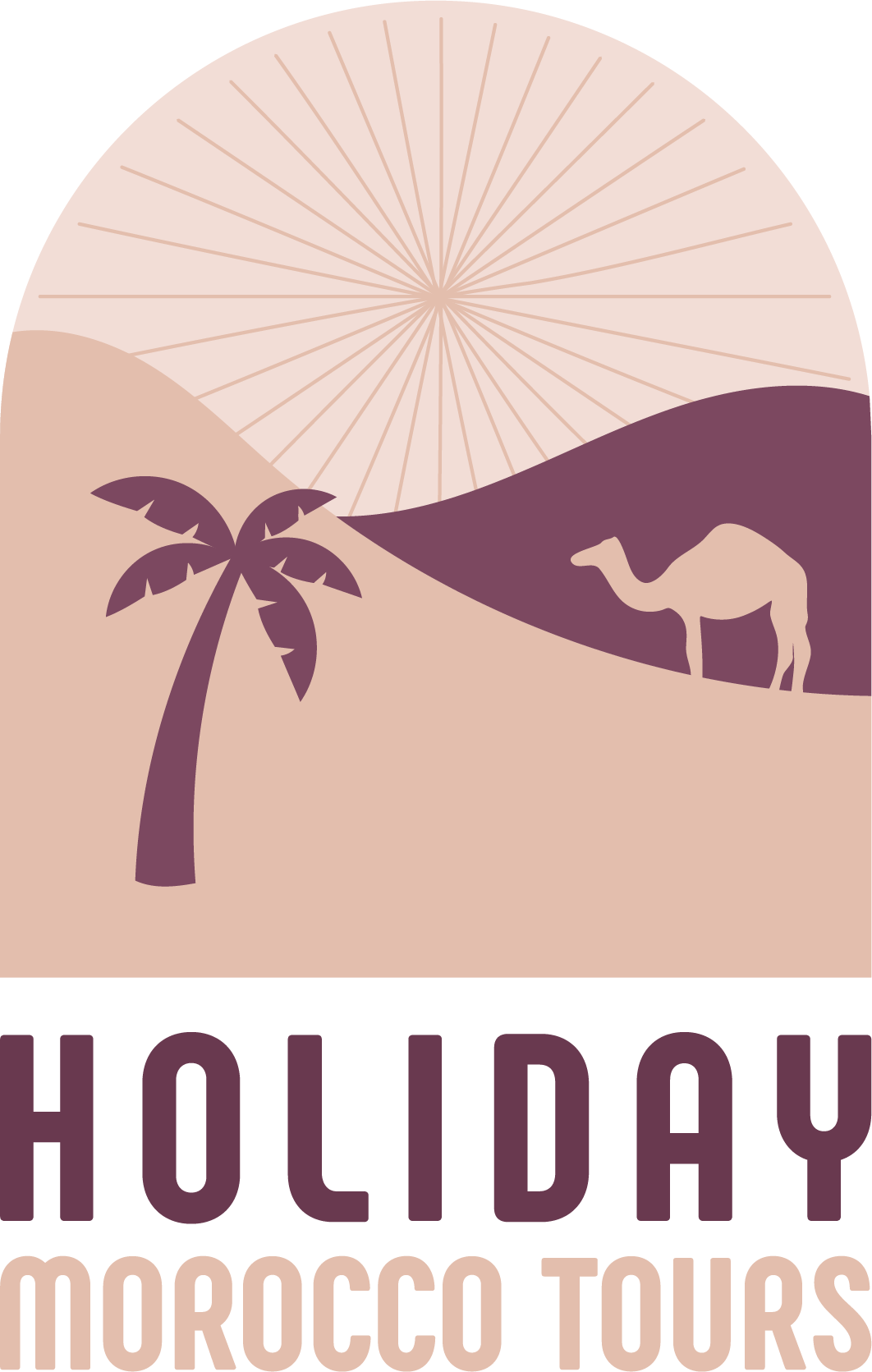Moroccan Souvenir Guide: What to Buy and Where
Introduction: The Magic Behind Moroccan Souvenirs
Morocco is a land of vibrant colors, rich history, and deep-rooted traditions — and one of the best ways to take a piece of that magic home is through its souvenirs. Whether you’re wandering the narrow alleys of a centuries-old medina or browsing a seaside market, you’ll quickly discover that Moroccan souvenirs are more than just mementos — they’re works of art, stories crafted by hand.
From intricately woven rugs to aromatic spices and glistening lanterns, each item reflects Morocco’s diverse cultural heritage. These treasures aren’t just popular with tourists; they’re symbols of the country’s soul, made with techniques passed down through generations.
In this guide, we’ll explore what to buy in Morocco, highlight the best souvenir items, and share the top cities and markets where you can find authentic pieces. Whether you’re shopping for gifts or keepsakes, this Moroccan souvenir guide will help you bring home something meaningful and memorable.
Traditional Moroccan Souvenirs to Buy
Morocco offers a dazzling variety of souvenirs — each with a story, a craft, and a culture behind it. Here are some of the most popular and authentic Moroccan souvenirs that travelers love to take home:
Handwoven Rugs and Carpets
Moroccan rugs are world-famous for their bold colors, tribal patterns, and incredible craftsmanship. Handwoven by Amazigh (Berber) women in the Atlas Mountains, each rug is unique — no two are ever the same.
-
Types to look for: Beni Ourain (thick and neutral), Azilal (colorful and abstract), Boucherouite (made from recycled fabrics)
-
Price range: Moderate to high, depending on size and quality
-
Tip: Ask for the story behind the rug — many sellers will proudly share it.
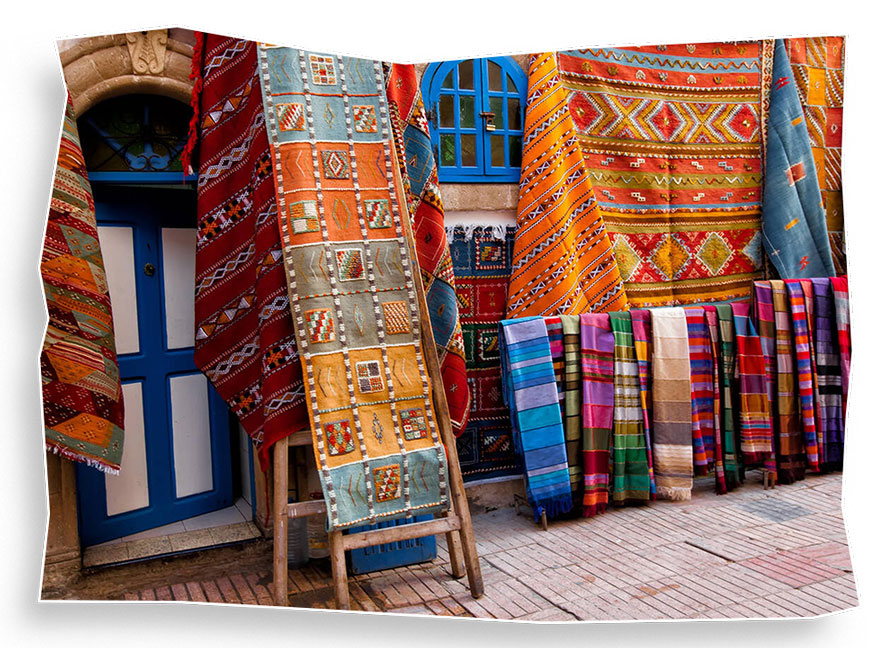
Ceramic Pottery and Tagines
From hand-painted bowls to the iconic tagine pot, Moroccan ceramics are colorful, practical, and full of charm. They often feature geometric zellige designs or motifs inspired by Islamic art.
-
Best for: Home décor or serving dishes
-
Safe to use?: Yes, but make sure the piece is food-safe if you’re planning to cook with it
-
Great gift idea for foodies and design lovers alike
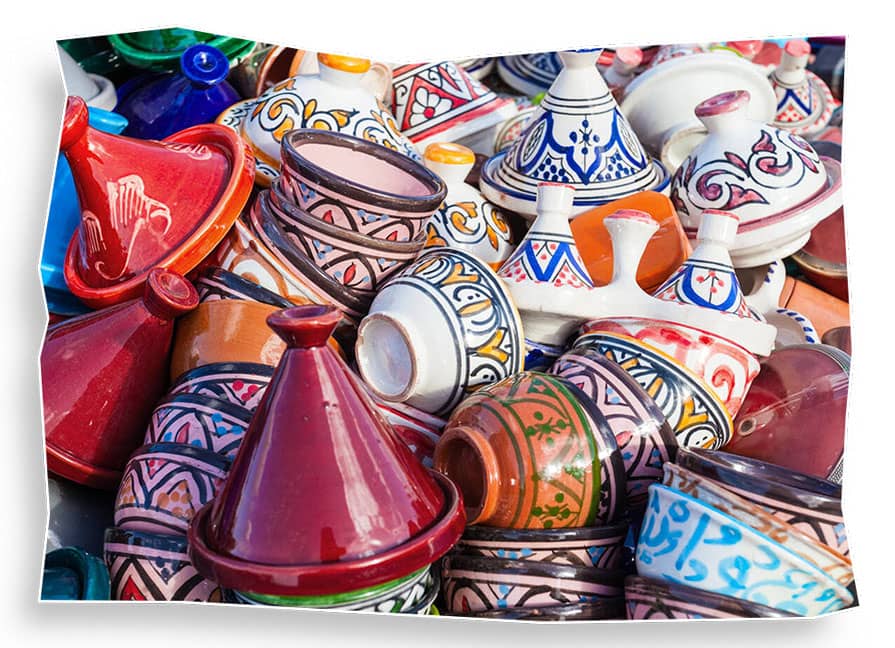
Leather Goods (Bags, Slippers, Poufs)
Morocco’s leather goods are renowned for their quality, especially from cities like Fes, which is home to one of the oldest tanneries in the world.
-
Popular items: Babouches (traditional slippers), handbags, ottomans (leather poufs), belts, and wallets
-
Look for: Soft goat or camel leather with a hand-dyed finish
-
Smell warning: Natural tanning methods give a strong scent at first — it fades over time.
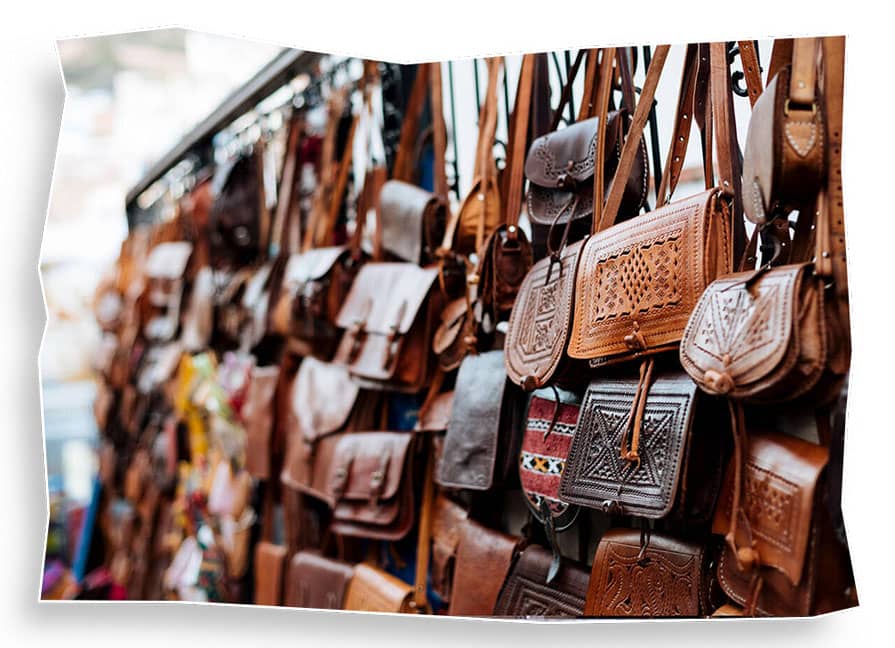
Moroccan Spices
If you want to take the flavor of Morocco home, nothing beats a pouch of traditional spices.
-
Must-buys: Ras el Hanout (a spice blend), saffron (from Taliouine), cumin, cinnamon, and paprika
-
Where to buy: Spice souks or certified spice shops for better quality
-
Pro tip: Ask how to use each spice — many vendors will give free cooking tips!
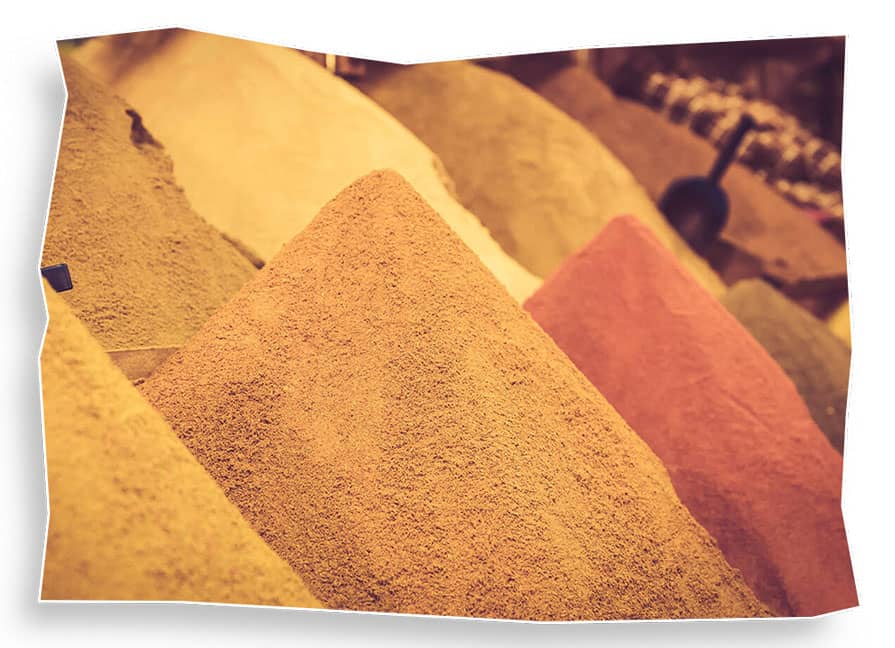
Argan Oil and Natural Beauty Products
Known as “liquid gold,” argan oil is a Moroccan specialty used in both cooking and beauty routines. The best oil comes from cooperatives in the south near Agadir and Essaouira.
-
Types: Cosmetic argan oil (for skin and hair) and culinary argan oil (for cooking)
-
Other beauty finds: Black soap (sabon beldi), rose water, clay masks (ghassoul), and kohl eyeliner
-
Tip: Make sure it’s 100% pure argan oil, not mixed with other oils
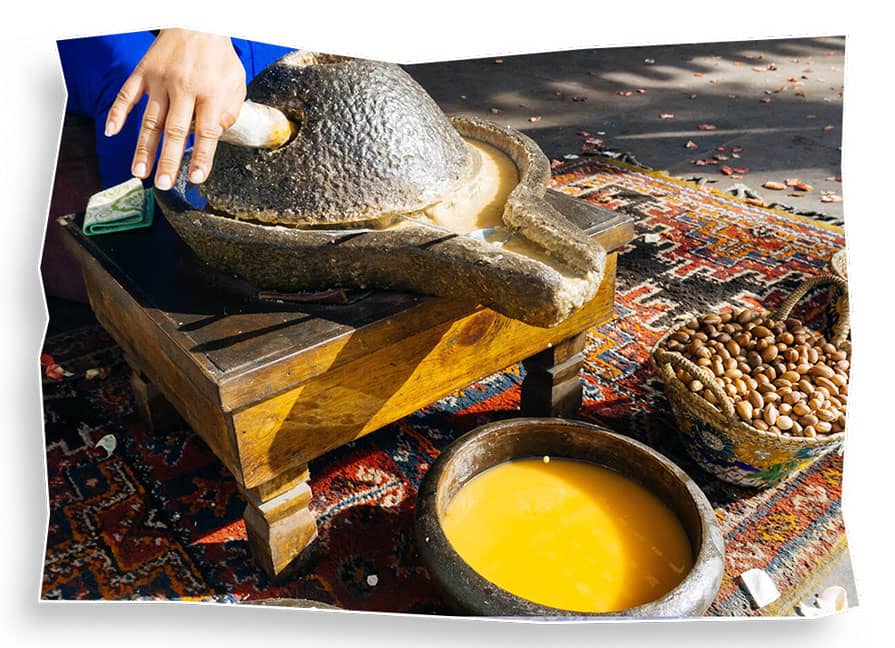
Traditional Clothing (Kaftans, Djellabas, Scarves)
Want to feel like royalty? Morocco’s traditional garments are elegant, detailed, and comfortable — perfect for gifting or special occasions.
-
Kaftans: Embroidered long dresses, often worn at weddings
-
Djellabas: Hooded robes worn daily in many Moroccan towns
-
Scarves and shawls: Lightweight, often made of cotton or silk, great for layering
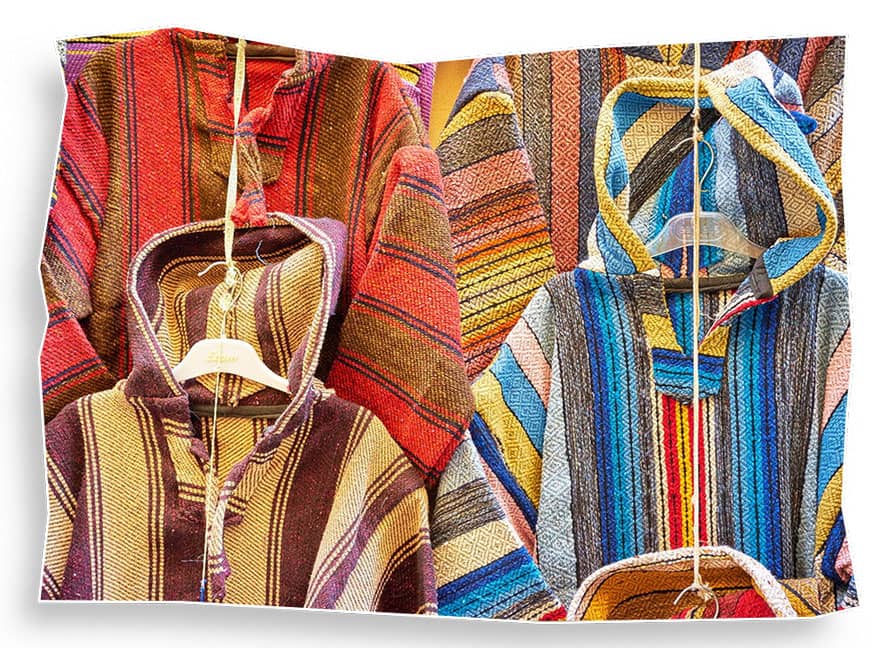
Lanterns and Metalwork
Moroccan lanterns add a magical, Moorish touch to any home. Made from brass, copper, or iron, they’re often hand-pierced to let light filter through beautifully.
-
Great for: Home décor, mood lighting
-
Other items: Tea trays, candle holders, mirrors
-
Buying tip: Ask if it’s handmade or mass-produced — quality varies a lot
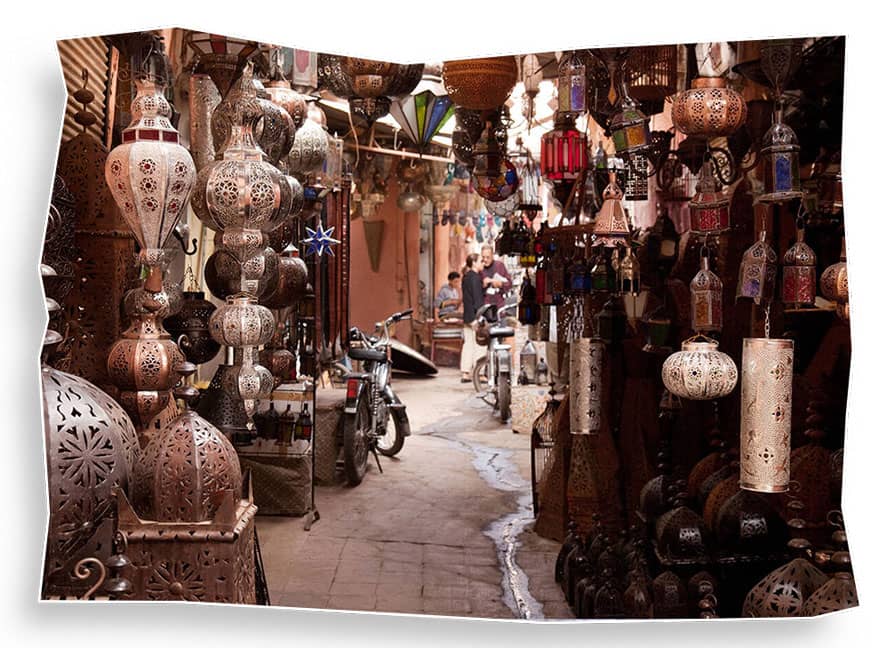
Bring a Piece of Morocco Home
Ready to shop like a local? Use this guide on your next Moroccan adventure to find souvenirs that are authentic, meaningful, and unforgettable.
Have a favorite Moroccan souvenir? Share it in the comments below!
Best Cities and Places to Shop for Moroccan Souvenirs
While you’ll find souvenirs in almost every corner of Morocco, certain cities and regions are especially known for specific crafts. Knowing where to shop in Morocco can help you find better prices, better quality, and more meaningful pieces. Here’s a breakdown of the best places to hunt for authentic Moroccan souvenirs:
Marrakech – The Iconic Souks of the Medina
Marrakech is the ultimate shopping destination in Morocco. Its labyrinthine souks (markets) are bursting with color, noise, and treasures at every turn.
-
What to buy: Leather goods, lanterns, spices, carpets, pottery
-
Top spots: Souk Semmarine, Souk el Attarine (spices), Ensemble Artisanal (fixed prices and government-regulated quality)
-
Bonus: Visit the Mellah (Jewish Quarter) for silver jewelry and antique finds
Fes – The Capital of Traditional Craftsmanship
Fes is a UNESCO World Heritage city and a hub for time-honored artisan work. It’s where many traditional crafts originate.
-
What to buy: Hand-painted ceramics, embroidered clothing, brass trays, leather goods from the tanneries
-
Top spots: Souk el Henna, Chouara Tannery (for leather), Place Seffarine (for metalwork)
-
Tip: Expect more traditional and less touristy goods than in Marrakech
Essaouira – Laid-back Markets and Argan Cooperatives
This breezy coastal town is a relaxed, artsy haven where shopping is less intense and more enjoyable.
-
What to buy: Argan oil, thuya wood boxes, musical instruments (like gnaoua drums), artwork
-
Top spots: Skala de la Ville (woodworking stalls), Medina shops, women-run argan cooperatives outside town
-
Great for: Ethically sourced beauty products and handmade wooden souvenirs
Chefchaouen – Artisan Goods with a Mountain Touch
Famous for its blue-painted streets, Chefchaouen is also known for its unique crafts made by mountain communities.
-
What to buy: Woven blankets and rugs, wool scarves, local artwork, handmade soaps
-
Top spots: Main Medina lanes, Plaza Uta el-Hammam, artisanal cooperatives
-
Vibe: More relaxed prices, fewer crowds, and colorful handmade items
Casablanca – A Blend of Modern and Traditional
While Casablanca is more urban and less touristy, it still offers excellent shopping if you know where to go.
-
What to buy: Contemporary Moroccan fashion, leather, spices, and high-quality ceramics
-
Top spots: Morocco Mall (for high-end), Quartier Habous (for traditional souks in a modern setting), Marché Central
-
Bonus: Ideal for fixed-price shopping and a break from intense bargaining
Tips for Shopping in Morocco
Shopping in Morocco is more than a transaction — it’s an experience. The energy of the souks, the rhythm of negotiation, and the personal interactions with artisans are all part of the cultural exchange. To help you make the most of it, here are some essential tips for buying Moroccan souvenirs with confidence and respect:
Master the Art of Bargaining
Bargaining is expected in most Moroccan markets, especially in the medinas. It’s part of the fun — and the culture.
-
Start low but respectful: Offer 50–60% of the initial price, and negotiate from there
-
Stay friendly and patient: Keep a smile on your face and don’t treat it like a battle
-
Don’t be afraid to walk away: If the seller doesn’t meet your price, walking away often brings a better offer
Know the Difference: Handmade vs. Mass-Produced
Not everything you see in the souks is artisan-made. Mass-produced items are increasingly common, especially in touristy areas.
-
Check for signs of handcrafting: Imperfections, brush strokes, unique patterns
-
Ask the right questions: Who made this? Where? Is it made from real leather/wood/metal?
-
Support cooperatives and government-endorsed stores when you can — they promote authentic craftsmanship and fair wages
Be Cautious with Prices That Seem “Too Good”
If it looks like a luxury item but costs pennies, it’s probably not the real deal.
-
Fake argan oil: Often diluted or made from cooking oil
-
“Antiques” and jewelry: Many are replicas; verify authenticity if paying high prices
-
Leather goods: Some are faux or chemically treated – look for soft, flexible, naturally dyed leather
Respect the Artisan’s Work
Buying from artisans is not just a transaction — it’s a way to support local culture and livelihoods.
-
Avoid aggressive haggling that undercuts the true value of their labor
-
Appreciate the craft: Take time to understand how the product was made
-
Use your purchase to tell a story — many items come with centuries of tradition behind them
Plan for Packing and Customs
Taking Moroccan souvenirs home can be tricky if you’re not prepared.
-
Rugs and ceramics: Ask vendors about international shipping or vacuum-packing options
-
Liquids and oils: Follow airline rules on carrying oils, perfumes, and beauty products
-
Customs regulations: Some items, like fossils, ivory, or endangered wood, may be restricted in your home country — check ahead
Final Thoughts: Take Home More Than Just a Souvenir
Bringing home a piece of Morocco is more than just collecting objects — it’s about carrying the soul of a country steeped in history, craftsmanship, and vibrant culture. Whether it’s a handwoven rug from the Atlas Mountains, a vial of golden argan oil from a Berber cooperative, or a delicately painted tagine from Fes, each item tells a story that lasts far beyond your trip.
When you choose authentic Moroccan souvenirs, you’re not only preserving memories — you’re supporting local artisans, encouraging sustainable traditions, and connecting with Morocco in a deeply personal way.
So as you explore the medinas, coastal towns, and mountain villages, let your souvenirs reflect the richness of your experience. Buy thoughtfully, ask questions, and don’t be afraid to fall in love with the artistry of Morocco.
